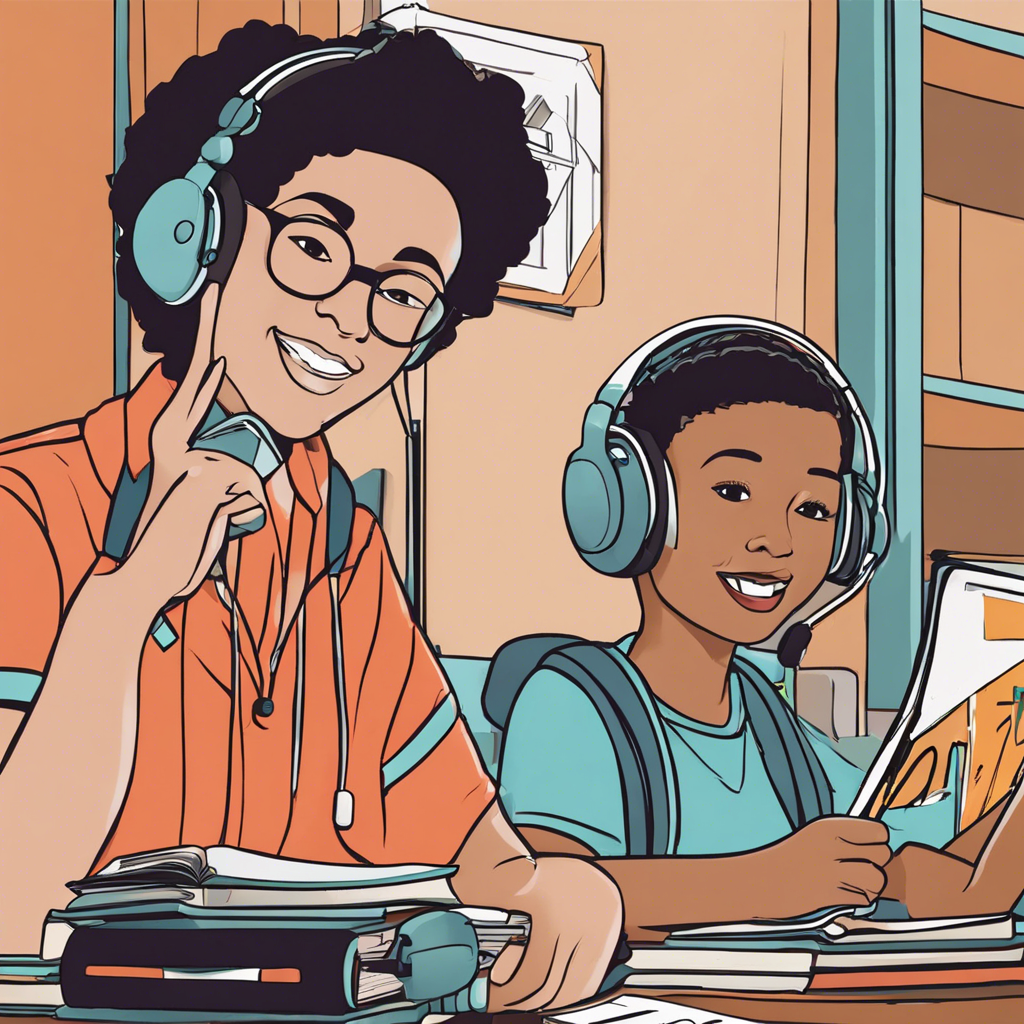Exploring the influence of educational podcasts on student engagement and learning outcomes.
In the digital age, the landscape of education is evolving rapidly. With the rise of audio-based content, podcasts have emerged as a powerful tool for **educators** to **engage** and **instruct** students in innovative ways. This article delves into the impact of educational podcasts on student learning, examining their potential to enhance **educational experiences** and foster a deeper understanding of subjects. By exploring research and real-world examples, we will uncover the benefits, challenges, and best practices associated with this growing medium in education.
## The Rise of Educational Podcasts
In recent years, podcasts have gained significant traction as a medium for sharing knowledge and telling stories. This trend has extended to the realm of education, as educators and institutions are increasingly embracing podcasts as a valuable teaching tool. Educational podcasts offer a unique opportunity to connect with students, providing a flexible and accessible learning experience.
[Educational podcasts: A new frontier in teaching](https://www.theguardian.com/education/2016/apr/13/educational-podcasts-a-new-frontier-in-teaching) is a great resource to understand this phenomenon better.
## Benefits and Challenges
### Enhancing Engagement and Accessibility
One of the key advantages of educational podcasts is their ability to engage students in the learning process. By providing audio-based content, students can access lessons and discussions on their own terms, allowing for **flexible learning** and a more personalized experience. This is particularly beneficial for students with different learning styles and those who may have barriers to traditional classroom settings.
### Personalized Learning and Convenience
Podcasts offer a sense of personalized learning, as students can listen and learn at their own pace. They can rewind, pause, or revisit specific parts of a lesson, promoting a deeper understanding of the subject matter. This flexibility is especially valuable for students with busy schedules or those who prefer self-directed learning. To learn more about personalized learning, you can visit [Personalized Learning: What It Is and Why It Matters](https://www.edutopia.org/personalized-learning-overview-guide).
### Building a Community of Learners
Educational podcasts can foster a sense of community among students. By providing a platform for discussions and sharing ideas, students can connect with peers and educators, fostering collaboration and a deeper understanding of the subject. This sense of community can be particularly powerful in online learning environments.
### Challenges and Practical Considerations
While educational podcasts offer numerous benefits, there are also challenges to consider. Producing quality audio content requires time, resources, and technical skills. Educators need to ensure that podcasts are well-structured, engaging, and accessible. Additionally, maintaining student engagement and providing interactive elements can be crucial for the success of educational podcasts.
### Practical Tips for Educators
To create engaging educational podcasts, educators should focus on production quality, including clear audio and engaging presentation. Providing interactive elements like quizzes or discussion prompts can enhance student involvement. Regular feedback and adapting content based on student needs are essential for continuous improvement.
### Student Perceptions and Feedback
Gathering student feedback is vital for understanding the impact of educational podcasts. Conducting surveys or focus groups can help educators gauge student satisfaction, identify areas for improvement, and ensure that podcasts meet learning objectives. Regular feedback loops enable educators to refine their podcast content and delivery methods.
### Questions and Answers
#### How can educators ensure that podcasts are accessible to all students?
Ensuring accessibility is crucial. Educators should provide transcripts, closed captions, and accessible audio formats. Additionally, offering alternative methods of engagement, such as text-based resources, can cater to diverse learning needs.
#### What are some effective ways to promote student interaction in educational podcasts?
Interactive elements like quizzes, polls, or discussion forums can encourage student participation. Creating opportunities for students to contribute and engage with the content helps foster a more interactive learning environment.
#### How can educators measure the impact of podcasts on student learning outcomes?
Measuring impact can be done through assessments, comparing podcast-based learning with traditional methods, and tracking long-term retention of knowledge. Regular evaluation and adjustment based on student feedback are essential for maximizing the benefits of educational podcasts.
## Conclusion
Educational podcasts have the potential to revolutionize the way students learn and engage with educational content. By leveraging the power of audio storytelling, educators can create immersive and accessible learning experiences. While there are challenges to be addressed, the benefits of educational podcasts are significant. From enhancing engagement and accessibility to fostering a sense of community, podcasts offer a dynamic and flexible learning environment. With careful planning, high-quality production, and a focus on student feedback, educators can create impactful podcasts that enrich the educational journey of their students.
## Relevant External Links and Anchor Texts:
1. [The Power of Audio in Education](https://www.edutopia.org/article/power-audio-education)
2. [Podcasts in Education: Engaging Students Through Audio](https://er.educause.edu/articles/2020/3/podcasts-in-education-engaging-students-through-audio)
3. [The Benefits of Podcasting in the Classroom](https://www.edutopia.org/article/benefits-podcasting-classroom)
